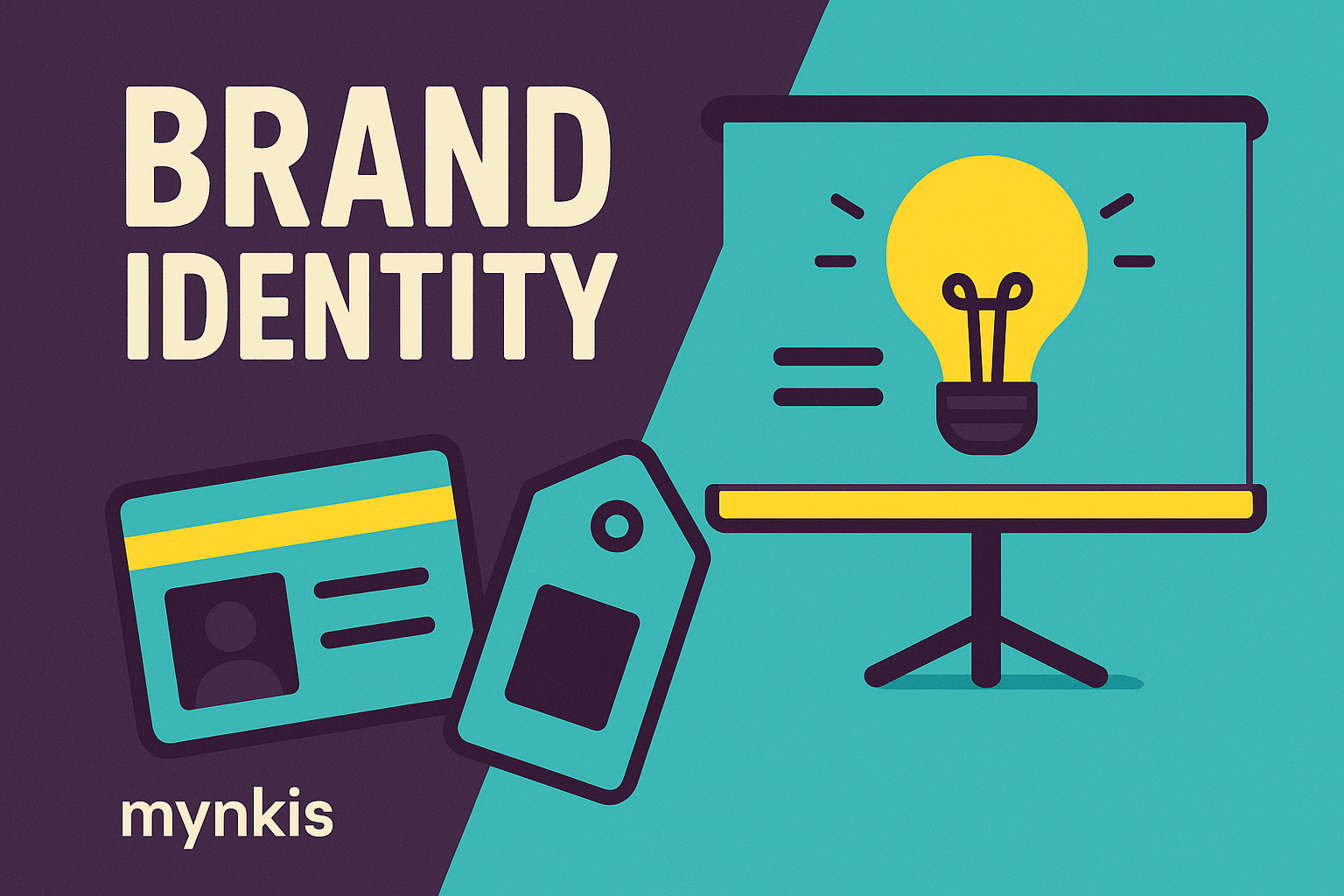Schedule a Demo
When I chat with founders about setting their tech infrastructure, it often comes back to the need for an authentic digital face. A compelling brand identity is the lifeblood of any small business. With competition fierce and eyeballs fleeting, the visual story your brand tells through logo, color scheme, and content strategy becomes the opening argument in your case for their attention.
Brand identity isn't just about looking good—it's about effective communication. Every element, from your logo on an MVP website to the tone of your social media posts, must convey your brand's essence with clarity. As small businesses scale up their software development needs, it becomes crucial to have a consistent visual language that communicates professionalism and connects with your audience on every platform.
Think of your logo as the central hub of your brand's identity. It's not just an emblem, it's a promise—an interaction that aligns your customers' expectations with your business's values. When scaling, the logo should be versatile enough to adapt across tech platforms and marketing materials while retaining its core identity.
I've worked with operations managers who often pointed out the pitfalls of over-generic brand designs. Your brand should stand apart by blending unique elements of your story into the design. This can mean customizing fonts that reflect your company culture or choosing colors that subconsciously align with what your business represents.
As small businesses, tailoring your design to reflect niche market preferences can foster a connection that generic designs simply can't achieve. This kind of intentional design plays well into your efforts to refine your custom software development processes, as it echoes through all aspects of your digital presence.
Leveraging the latest in custom software development means your brand's digital identity can grow and evolve at the same pace as your business. Through enterprise web solutions and scalable design techniques, you're not just creating a static look; you're shaping a dynamic experience that evolves with customer feedback and business growth.
Modern brands utilize tech solutions like A/B testing to refine the visual elements of their digital presence, which aligns seamlessly with software updates or new feature rollouts in an MVP site. The integration of design and technology allows businesses to understand what clicks with their audience and iterate accordingly.
Consistency in brand design across all mediums isn't just best practice—it's a crucial element for establishing brand recognition. When scaling up your enterprise web solutions, maintaining that visual continuity ensures your brand is easily identifiable, fostering trust and loyalty amongst your customer base.
In a world where startups pivot and adapt rapidly, your brand should be the bedrock that customers rely on. Whether you're scaling your MVP website or undergoing a major rebrand to cater to emerging markets, the coherence in design acts as a reminder of your foundational principles.
I recall working on projects where the initial MVP was a mere fraction of what the end product became. Much like software development, brand identity requires an iterative approach. Let your design evolve through user interaction data and market demands.
This iterative design not only drives engagement but also informs your development team about what resonates with your audience. Pairing scalable brand elements with iterative software development can enable you to refine your MVP website with precision—everything from color to font can pivot as efficiently as your latest tech feature.
Small businesses often operate with limited resources, and this flexibility in design is a must. Your design strategy needs to encompass how your brand might look in different scenarios. Will it retain its integrity when stretched across various devices or digital marketing platforms? Based on available research on design adaptability, individual results may vary, but the aim is always clear: maintain a strong brand narrative throughout your technological expansion.
A flexible branding approach allows your tech infrastructure to expand without diluting your identity—a vital skill when you're utilizing custom software development to propel your business into new territories or services. Crafting this kind of adaptable brand design takes insight, but the reward is a recognizable identity that feels at home in any digital context.
Don't ignore the value of strategic partnerships when designing your brand. Collaborating with other entities, from tech partners to industry influencers, can refine your visual language and lend an edge to your market presence.
Symbiosis in brand design, where your business' identity enhances and is enhanced by allied partners, is another aspect to consider. As your custom software development ventures progress, align your brand identity with your partners' to enhance the overall digital ecosystem in which your business operates.
Founders, scaling up doesn't mean losing the soul of your business. Through every line of code added to your enterprise web solutions and every pixel placed in your design, let your brand's story shine through. Embrace iteration, foster consistency, and let the adaptability of your design grow your audience as you grow your business.
